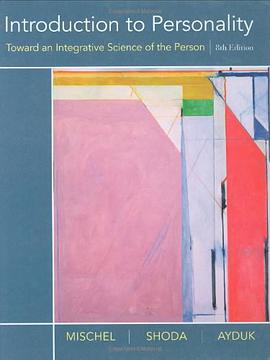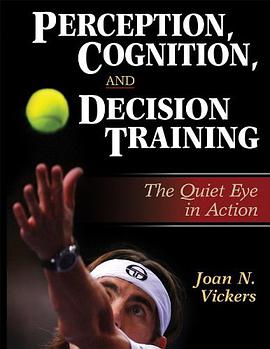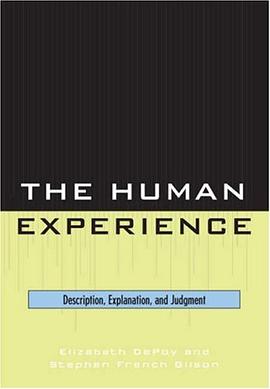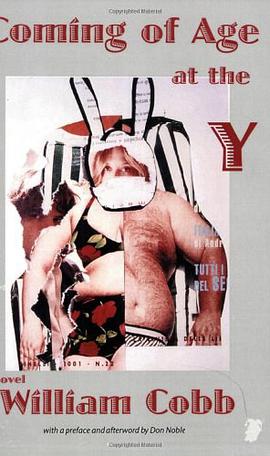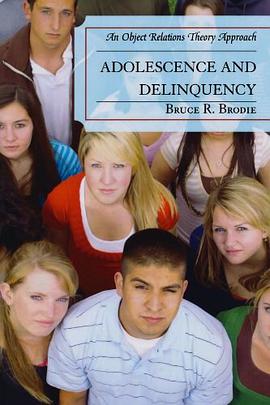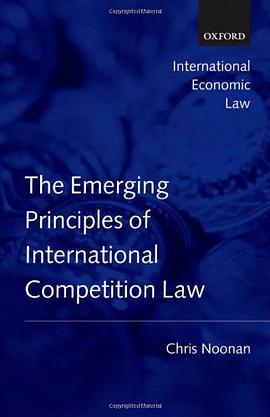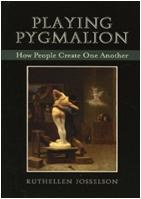copied from: https://www.jstor.org/stable/j.ctt9qd62m
0. Victor Turner and Contemporary Cultural Performance: An Introduction (pp. 1-38)
Graham St John
Held by Edward Bruner (1993: 332f.) to be the “archetype of the creative spirit in anthropology,” a prolific contributor to the anthropology of ritual, symbols, and performance, Victor Turner died in 1983 at the age of 63. Yet, as countless graduates and scholars maintained interest in the interstices and margins of (post) modern culture, applying and reworking Turner’s cultural processualism in explorations of manifold cultural performances, his legacy continued, and endures still. Inspired by the results of field research conducted with wife Edith Turner on the rituals of the Ndembu of northwestern Zambia, and by the post-African scholarship, cultural anthropologists,...
1.Performing Culture:: Ritual, Drama, and Media
Chapter One Toward a Unified Theory of Cultural Performance: A Reconstructive Introduction to Victor Turner (pp. 41-58)
J Lowell Lewis
As an academic who teaches both in anthropology and in performance studies, I am indebted to the work of Victor Turner which has been central to my thinking about cultural events since the beginning of my postgraduate career. Turner’s influence has been widespread in many disciplines because his ideas were innovative, clearly presented, and generally applicable to many areas of humanistic study. Indeed, this is surely one reason why Richard Schechner saw him as the ideal person with whom to collaborate on the creation of a new academic discipline. This influence has also brought with it criticism, of course, although...
Chapter Two The Ritualization of Performance (Studies) (pp. 59-75)
Ian Maxwell
This essay is about the allure of this fructile chaos Turner described; both the allure that such an intensity of experience holds for participants, and, no less, the allure of that state as a theoretical construct: one that is foundational to the project of performance studies. Inaugurated by the collaboration between Turner and theater director-theorist Richard Schechner, performance studies takes its ideological lead from Turner’s faith, implicit in the layering of maternal images in the passage quoted above, in a fundamental, nascent human goodness. Indeed, Turner’s commitment to a liberatory, salvational, “grace”-ful essence of the deep, fundamental human states predicated...
Chapter Three Performing “Sorry Business”: Reconciliation and Redressive Action (pp. 76-93)
Michael Cohen, Paul Dwyer and Laura Ginters
The phrase “sorry business” carries a number of meanings in Australian English. For speakers of our parents’ generation it may convey an air of resignation.¹ “It’s a sorry business,” one might say while contemplating someone’s misfortune. For Indigenous Australians, on the other hand, the phrase implies an altogether more active engagement with kin and country. When a family member dies, for instance, an Indigenous person will speak of “having sorry business” in the sense of having things to do. The sorrowful event propels you and the rest of your community into a set of mutually binding, ritual obligations, such as...
Chapter Four Liminality in Media Studies: From Everyday Life to Media Events (pp. 94-108)
Mihai Coman
Of all the concepts configured by cultural anthropologists in the analysis of ritual/ceremonial events, one in particular has enjoyed special attention in the analysis of mass media processes:liminality. Inspired by the French ethnologist Arnold van Gennep, Victor Turner coined the term to describe and define the in-between status of initiates during rites of passage. Turner integrated the concept of liminality into a general theory of ritual and its social functions, central elements of which are:
a) In all societies (traditional and modern) rituals control social change: “ritual is by definition associated with social transition” (1977: 77); in other words,...
Chapter Five Social Drama in a Mediatized World: The Racist Murder of Stephen Lawrence (pp. 109-124)
Simon Cottle
Victor Turner’s schema of “social dramas” continues to hold analytical and explanatory promise for understanding public rituals and their complex dynamics and transformative impacts within contemporary societies. This chapter sets out to demonstrate how this is so. Based on recent research into the media’s representations of the racist murder of the black teenager Stephen Lawrence and how through time this became a major “ social drama” raising issues of injustice, identity, and racism in British society and releasing cultural reflexivity and social reform, I argue that Turner’s ideas offer deep insights into the transformative capacities of contemporary rituals.¹ In today’s...
2. Popular Culture and Rites of Passage
Chapter Six Modern Sports: Liminal Ritual or Liminoid Leisure? (pp. 127-148)
Sharon Rowe
Sport is classified by Victor Turner as a liminoid phenomenon, in contrast to a genuinely liminal, or ritual form of cultural performance.¹ Turner names sport in several enumerations of “industrial-liminoid” phenomena, a classification of performative genres that includes the full spectrum of modern art and entertainment.² Not alone among anthropologists in excluding sport from the realm of ritual,³ his exclusion is based on a distinction that becomes unduly arbitrary when analyzed against the phenomenon of modern sport. Indeed, by relying on the very terms he uses to develop his liminal/liminoid distinction, I hope to show that modern sport compares more...
Chapter Seven Trance Tribes and Dance Vibes: Victor Turner and Electronic Dance Music Culture (pp. 149-173)
Graham St John
Does anyone who has experienced the benevolent, expectant, and even millenarian “ vibe” of a dance party not recognize what Turner meant by this statement?¹ Excavating and renovating his ideas, scholars of electronic dance music culture (EDMC)² have indeed begun looking to Turner for insights. While other youth, music, and alternative cultural phenomena—including Deadheads (Sardiello 1994), New Age Travelers (Hetherington 1998, 2000), the Maleny “Fire Event” (Lewis and Dowsey-Magog 1993), ConFest (St John 1997, 2001a) and Burning Man (Gilmore and Van Proyen 2005; Kozinets 2002)—have received illumination via Turnerian thought, EDMC (especially the genre and culture of “trance”)...
Chapter Eight Backpacking as a Contemporary Rite of Passage: Victor Turner and Youth Travel Practices (pp. 174-189)
Amie Matthews
After spending twenty-four hours on a flight from Sydney to London, in November 2001 I touched down in England.¹ I was twenty and it was my firstrealflight, my first overseas experience, and my first time traveling alone. It was 5:30 AM when I arrived at Heathrow, and yet despite the cold, despite the jet lag, all that I was aware of as I hoisted my backpack onto my shoulders was a pervading sense of freedom, of liberation, of a “world-is-youroyster” kind of optimism. As I traipsed my way around the United Kingdom and continental Europe, I was struck...
Chapter Nine Walking to Hill End with Victor Turner: A Theater-Making Immersion Event (pp. 190-208)
Gerard Boland
It begins in November, three months prior to their commencement of study in Bathurst, New South Wales (Australia). The participants have presented themselves for audition and interview in the hope of securing one of thirty places within the BA Communication (Theater/Media) program at Charles Sturt University. In one room, a woman and a man watch the three audition pieces that each of the applicants has prepared. In another room, two men put questions to the applicants. Many of these are of a type that one would expect to be asked, but some them are surprising, insofar as this is an...
3.Contemporary Pilgrimage and Communitas
Chapter Ten Of Ordeals and Operas: Reflexive Ritualizing at the Burning Man Festival (pp. 211-226)
Lee Gilmore
At summer’s end in the Black Rock Desert, over 50,000 revelers seeking an alternative to the ordinary will gather in this remote corner of northwestern Nevada for an eclectic annual celebration of art and fire known as Burning Man. For one week, this temporary community—termed Black Rock City—becomes the fifth largest metropolis in the state of Nevada before fading back into the dust, as all physical traces of this momentary habitation are completely eliminated at the festival’s conclusion. Participants—collectively known as “Burners”—dwell in tents and imaginatively designed shelters laid out along a carefully surveyed system of...
Chapter Eleven “Shopping For a Self”: Pilgrimage, Identity-Formation, and Retail Therapy (pp. 227-241)
Carole M Cusack and Justine Digance
Since the mid nineteenth century Western society has been characterized by rapid change that has significantly affected the understanding of self, society, and religion.¹ Bruce (1998: 23– 32) argues cogently that the process of secularization, whereby “sectors of society and culture are removed from the domination of religious institutions and symbols” (Berger 1967: 107), and the related rise of individualism have altered the religious context of the West by creating a marketplace where adherence or nonadherence depends on personal taste and inclination, rather than family or community allegiance. This is manifested in the declining influence of the Christian churches and...
Chapter Twelve Turner Meets Gandhi: Pilgrimage, Ritual, and the Diffusion of Nonviolent Direct Action (pp. 242-257)
Sean Scalmer
Protests cross national boundaries. Campaigns often gain fresh recruits in foreign lands. Causes are joined, tactics borrowed, symbols recycled, alliances fashioned, and new methods applied. This is a venerable process. The diffusion of collective action extends back several centuries. It shaped the language of “revolution,” the technology of the barricade, and the ferment of 1848. It brought Marxism to Russia and Leninism to the world. In the contemporary period, global diffusion happens with particular frequency and ease (Meyer and Tarrow 1998: 11). Over the last few years, the anticapitalists of Seattle have inspired their comrades in Prague, Genoa, and Melbourne;...
Chapter Thirteen Dramas, Fields, and “Appropriate Education”: The Ritual Process, Contestation, and Communitas for Parents of Special-Needs Children (pp. 258-272)
Margi Nowak
In his bookDramas, Fields, and Metaphors, Victor Turner notes, in agreement with Freud, “that disturbances of the normal and regular often give us greater insight into the normal and regular than does direct study” (1974: 34). He develops this point further, acknowledging the “tragic quality” of the course of events likely to take place in a social drama (which, by definition, is full of disturbances of the normal and regular) where so much pressure bears upon loyalty and obligation. “Conflict,” he says, “seems to bring fundamental aspects of society, normally overlaid by the customs and habits of daily intercourse,...
4. Edith Turner
Chapter Fourteen An Interview with Edith Turner (pp. 275-296)
Matthew Engelke
The following interview is taken from a much longer life history conducted over the course of several months in 1997 as a project sponsored in part by the Historical Archives Program of the Wenner-Gren Foundation for Anthropological Research.¹ The original motivation for that project was to explore the life and writing of Edith Turner, her marriage to Victor Turner, and how the dynamics of gender and marriage affect the production of anthropological work. This interview has been framed to touch brie fly on the issues raised in the longer work. In a few instances, we have found it necessary to...
Chapter Fifteen Woman/women in “the Discourse of Man”: Edie Turner and Victor Turner’s Language of the Feminine (pp. 297-308)
Barbara A Babcock
In 1970, I was a postgraduate fellow in anthropology at the University of Chicago, completing my doctorate there in comparative literature. I’d heard much about Victor Turner’s “Myth, Ritual, and Symbol” seminar, but what I experienced on those Thursday nights was beyond anything I could have imagined. In the first place, it was in his home—something that no other professor at the University of Chicago did in those days. There were Rory and Alex in their pajamas on the stairs, and there was Edie back and forth between the seminar, the kitchen, and putting children to bed. Soon, some...
Chapter Sixteen Faith and Social Science: Contrasting Victor and Edith Turner’s Analyses of Spiritual Realities (pp. 309-323)
Douglas Ezzy
Academics engage in a form of reflexive sequestration of religious experience in which they silence their own religious experiences, and the experiences of those they write about. The social sources of this silencing are not hard to identify. As Edith Turner herself notes, at the time that Victor Turner was working on his PhD in the 1950s “almost everyone in anthropology was a left-leaning atheist” (Engelke 2000: 847, the interview is reproduced in this volume). The successful completion of Turner’s PhD required that he sequester his interests in, and accounts of, religious experience. In other words, an endemic methodological atheism...
Chapter Seventeen Challenging the Boundaries of Experience, Performance, and Consciousness: Edith Turner’s Contributions to the Turnerian Project (pp. 324-337)
Jill Dubisch
In her essay “Works and Wives: On the Sexual Division of Textual Labor,” Barbara Tedlock comments on the fact that “[u]ntil recently, it has been mainly women who have published experiential fieldwork materials. Where husband and wife worked in the same region, it was usually the woman who adopted the narrative mode and the man the expository one” (1995: 267). She goes on to discuss some of the ways in which the wives of anthropological husbands (whether they themselves were trained as anthropologists or not) have contributed to, yet effaced themselves in, their husbands’ research, and, when writing themselves, have...
· · · · · · (
收起)






